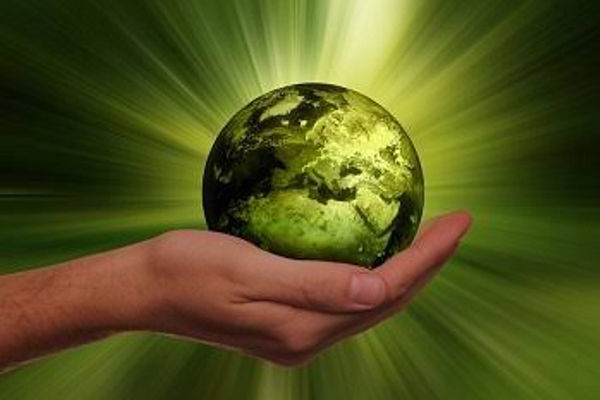To lowering carbon emissions, green technology—also referred to as eco-friendly technology—also encourages sustainable business practices. Utilizing green technology items, such as energy-efficient appliances and smart home equipment, reduces homes’ overall carbon footprint in addition to lowering electricity costs. Early attempts to use alternative energy sources and incorporate sustainable practices into daily life are where the history and development of green technology begin. When it became clear that rapid industrialization and urbanization were causing serious environmental deterioration during the industrial revolution, the idea of “green technology” first came into being. In the 1970s, the advent of the environmental movement brought greater emphasis to the need for sustainable practices. A turn towards environmental responsibility was signaled by the creation of Earth Day and the passage of important environmental laws such as the Clean Water Act and the Clean Air Act in the United States during this decade.
Wind Turbines
The lowest price threshold long maintained by coal-fired power facilities has been surpassed by wind turbines and solar panels. An increasing number of solutions are emerging since intermittency is a major challenge. In the coming decades, a sizable share of the market for renewable electricity production is expected to be occupied by low-wind speed wind turbines, vertical-axis wind turbines, urban wind turbines, and integrated chimney-type wind turbines. The most effective techniques to generate electricity using natural resources rather than fossil fuels are solar and wind power.
Carbon Capture And Storage
Carbon capture and storage (CCS) is a means of lowering carbon dioxide (CO2) emissions, which could be essential to helping to tackle global warming. It’s a three-step process, involving: capturing the CO2 produced by electricity generation or industrial activities, such as hydrogen production, steel or cement making; transferring it; and then permanently storing it deep underground. Here, we examine CCS’s operation and possible advantages.
Circular Waste Management
Waste management is directly related to many SDGs. These include: municipal solid waste management (Target 11.6), food waste (Target 12.3), chemicals and hazardous waste, including e-waste (Target 12.4), recycling (Target 12.5), marine litter (14.1), access to basic services (Target 1.4), and the removal of dumping to improve water quality (Target 6.3). Additionally, domestic material usage and material footprint are addressed by two closely linked targets (8.4 and 12.2). As a result, some SDGs can be attained through sustainable waste management.
Poor waste management draws disease vectors and pollutes the air, water, and land. Poor people, who are more likely to live close to or work near garbage disposal sites, are disproportionately affected by poorly managed waste because it can clog stormwater drains, causing flooding and unhygienic and hazardous conditions. Toxins and particulate matter released into the air by burning garbage can lead to a variety of health problems, including neurological and respiratory disorders.
Inadequate solid waste management causes plastic pollution, which has been projected to cost the marine environment $13 billion year, and climate change, which is caused by 5% of world carbon emissions. Poorly functioning Municipal Solid Waste Management (MSWM) systems are responsible for about 80% of the plastic that ends up in the ocean.
Storage – The New Power
The main problem at hand is the intermittent nature of green energy. Even storing 30 kWh for a typical US home’s daily use can be quite expensive due to energy storage’s high cost and poor efficiency. Numerous alternatives are being developed, nevertheless. Batteries use electrochemical cells to transform chemical energy into electrical energy. A chemical battery uses electrochemical compound reactions to store energy from a generator in chemical form. Reverse chemical reactions allow the battery to release electricity into the smart grid as needed. By taking renewable energy sources into consideration, batteries also maximize multi-source power. For instance, battery management systems in electric cars can store and provide electricity to the smart grid, functioning as a power bank.
Compressed Air Energy Storage (CAES) – The goal of compressed air energy storage (CAES) is to produce energy with the intention of storing it for later consumption. In order to store energy in an airtight, subterranean chamber, it pressurizes gas or air. Heat expansion then uses a turbine to release electricity. By storing energy at off-peak times to meet high-peak demands, it helps balance the grid and counteract demand surges.
Pumped Heat Electrical Storage (PHES) – For later use in heating, cooling, or power generating, excess energy from renewable sources or waste heat is stored in a pumped heat electrical storage (PHES) system. It runs a storage engine on electricity and links two sizable thermal stores. A heat pump is used to move heat from the cold store to the hot store in order to store electricity. Waste heat is transferred from the hot store to the cold store using a heat engine that recovers energy through reverse.
Biomass Energy
One type of renewable energy is biomass energy, which is produced from plant and animal materials. It lessens our dependency on fossil fuels, primarily coal, gas, and oil, which stop carbon from being released into the atmosphere. Biomass energy has the potential to be carbon neutral. This can happen if the manner it is made removes the same amount of carbon from the atmosphere that it releases (e.g., if producing, transporting, processing and burning ethanol created from canola emits the same amount of carbon the canola needs to grow).
Green Bonds And Other ESG-Related Financial Products
Green bonds and other ESG-related financial products will gain importance, and ESG investing will grow. ESG measurements, particularly environmental metrics associated with carbon management indicators, are being linked to reward programs and KPIs for C-suite executives as a result of regulatory demands. Investors will give resilience, adaptation, and the low-carbon transition top priority in their portfolios due to the imminence of climate hazards.
In order to finance energy changes, which could cost more than $1 trillion USD, we will also witness the growth of popular debt instruments, particularly Green, Sustainable, Social, and Sustainability-linked bonds (GSS+). There will be an increase in sustainability-linked bonds and loans (SLLs and SLBs, respectively), which tie the issuance of debt to specific sustainability performance targets. Green-enabling initiatives include the extraction of resources like lithium, which is essential for green technologies, or the production of insulating materials to help lower emissions associated with building.
India’s Goal and FDI Stance
For projects using renewable energy, India permits up to 100% FDI under the automatic method. Solar energy, wind energy, green hydrogen, energy storage devices, and electric vehicles are all potential investment prospects in the renewables industry. India now has 57 authorized solar parks, and the solar energy industry is expanding quickly. The market for wind energy is growing, with a 2030 offshore target of 30 GW.


















